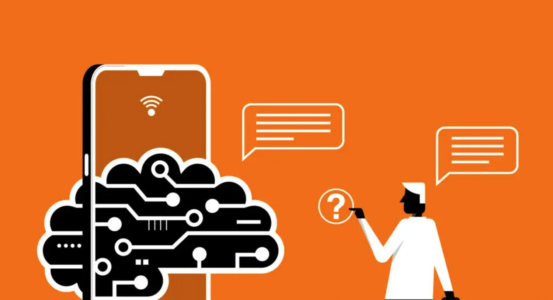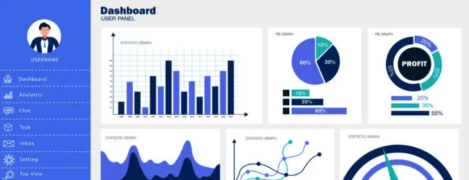How Generative AI Can Transform Content Marketing Strategies

Generative AI is revolutionizing industries, and content marketing is no exception. By leveraging advanced AI tools, businesses can create, optimize, and distribute content at scale, saving time and resources while delivering value to their audiences. In this blog post, we explore how generative AI can transform your content marketing strategy, complete with actionable insights and real-world examples.
1. Streamlining Content Creation
One of the most apparent benefits of generative AI is its ability to produce high-quality content quickly. Whether you’re drafting blog posts, social media captions, or video scripts, AI tools can help streamline the creative process.
Example:
- Blog Post Drafting: Tools like ChatGPT or Jasper AI can generate detailed drafts based on simple prompts. For example, a prompt like “Write a 1,000-word blog on sustainable fashion trends” can produce a comprehensive article in minutes.
- Social Media Captions: Platforms like Copy.ai can create engaging captions tailored to different social media platforms, reducing the time spent brainstorming.
Practical Tip: Use generative AI for the first draft and refine it with a human touch to ensure the content aligns with your brand voice.
2. Personalizing Content for Diverse Audiences
Generative AI enables marketers to create personalized content tailored to specific audience segments. By analyzing user data, AI can craft messages that resonate deeply with individual preferences.
Example:
- Email Marketing: AI tools like Persado or Phrasee can generate subject lines and email copy optimized for open rates and conversions.
- Dynamic Landing Pages: AI can create variations of landing pages that cater to different customer personas, improving engagement and conversion rates.
Practical Tip: Combine AI-generated content with A/B testing to identify which variations perform best across your audience segments.
3. Scaling Content Production for Multichannel Marketing
In today’s omnichannel marketing landscape, businesses need to produce content for multiple platforms simultaneously. Generative AI can help scale your efforts without sacrificing quality.
Example:
- Repurposing Content: AI can transform a single blog post into a video script, a podcast outline, or a series of social media posts.
- Language Localization: Tools like DeepL Write or OpenAI’s language models can translate and localize content for global audiences, making international marketing campaigns more effective.
Practical Tip: Develop a content hub strategy where a core piece of content is repurposed into various formats using AI, ensuring consistency across platforms.
4. Enhancing SEO and Content Optimization
Generative AI excels at analyzing vast amounts of data, making it a powerful ally for SEO and content optimization. AI can identify trends, suggest keywords, and optimize your content for search engines.
Example:
- Keyword Research: Tools like SEMrush or Clearscope can generate keyword clusters, and AI can create content optimized for those keywords.
- On-Page Optimization: AI can analyze your existing content and recommend updates to improve readability, keyword density, and meta descriptions.
Practical Tip: Regularly update your evergreen content with AI-powered insights to maintain its relevance and search ranking.
5. Generating Visual Content and Enhancing Creativity
Generative AI is not limited to text; it can also create compelling visuals to complement your content. From custom graphics to video animations, AI expands the creative possibilities for marketers.
Example:
- Visual Content Creation: Tools like DALL-E or Canva’s AI feature can create unique images based on textual prompts.
- Video Scripts and Storyboarding: AI tools like Runway or Pictory can generate video scripts and storyboards, making video production more efficient.
Practical Tip: Use AI-generated visuals as a starting point, but refine them to align with your brand’s visual identity.
6. Improving Data-Driven Decision-Making
Generative AI doesn’t just create content—it helps analyze performance data to inform future strategies. By identifying patterns and predicting trends, AI empowers marketers to make smarter decisions.
Example:
- Content Performance Analysis: AI tools like MarketMuse can analyze which content pieces perform best and recommend future topics.
- Customer Insights: Generative AI can process feedback from reviews, surveys, and social media to understand customer sentiments and preferences.
Practical Tip: Integrate AI analytics with your existing CRM or marketing automation tools to get a 360-degree view of your content performance.
7. Minimizing Costs and Increasing Efficiency
By automating repetitive tasks, generative AI helps reduce operational costs while enabling teams to focus on high-impact activities.
Example:
- Content Scheduling: AI tools like Buffer or Hootsuite Insights can automate content scheduling and provide recommendations for the best posting times.
- Customer Support: Generative AI can create FAQ pages or chatbots that address common customer queries, reducing the workload for your team.
Practical Tip: Use AI to handle routine tasks and reinvest the time saved into strategic planning and creativity.
Conclusion
Generative AI is a game-changer for content marketing. From creating personalized, scalable content to optimizing performance and reducing costs, the possibilities are endless. However, success lies in using AI as a tool to enhance human creativity, not replace it. By integrating generative AI thoughtfully into your strategy, you can stay ahead of the competition and deliver content that truly resonates with your audience.
Ready to transform your content marketing strategy? Start experimenting with generative AI today and unlock its full potential!







